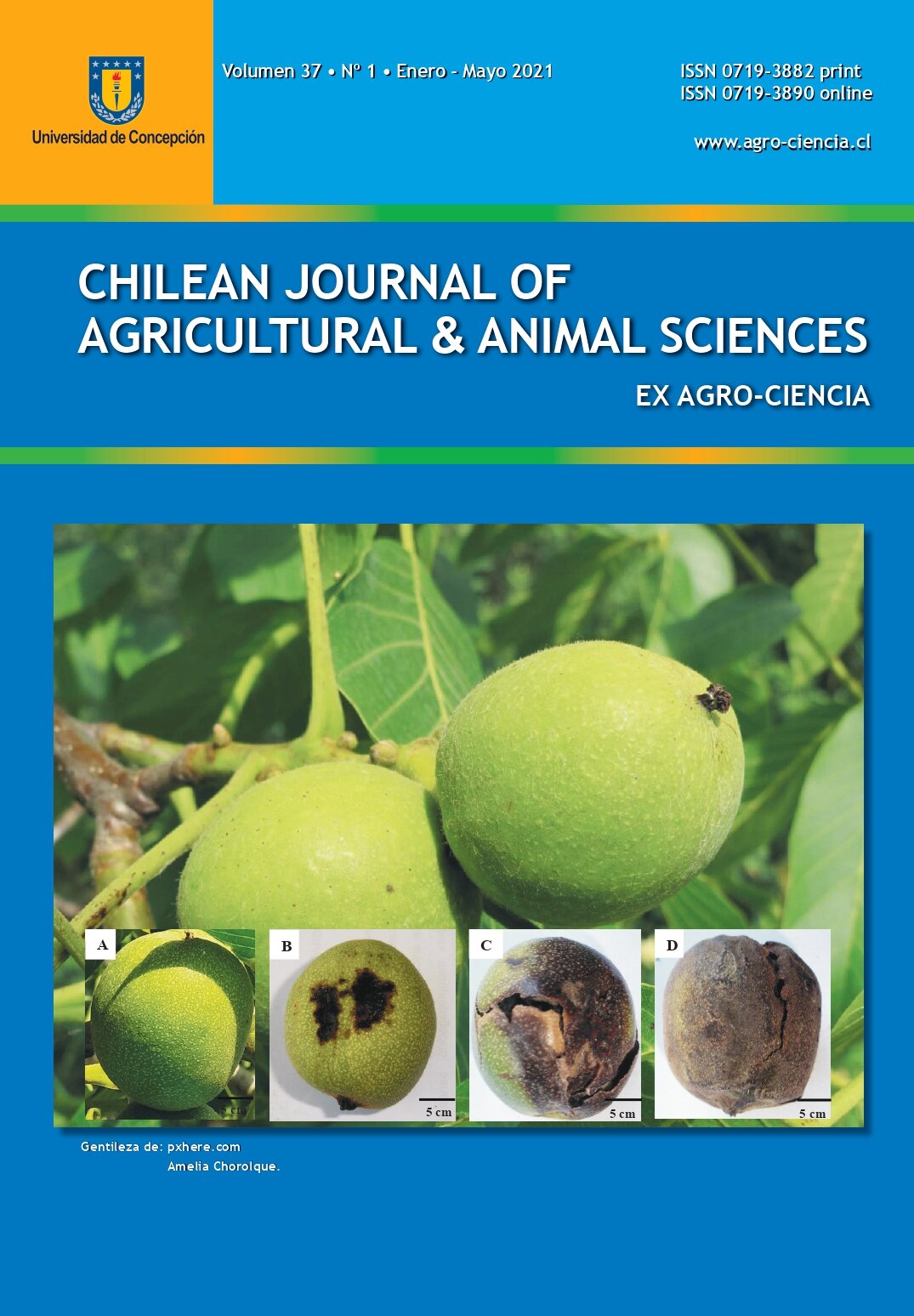RELATIONSHIP BETWEEN THE BODY CONDITION INDEX AND THE MODIFIED HENNEKE BODY CONDITION SCORE IN CHILEAN HORSES
Lisandro Muñoz1*, Mario Briones2, María José Saavedra1
ABSTRACT
The Henneke Scoring System is a method of evaluating a horse’s body condition. The aim of this study was to determine the relationship between the body condition index and the modified Henneke body condition score in Chilean horses (total sample and by sex). Measurements were taken in 50 Chilean horses in training (11 stallions, 15 geldings and 24 mares). The modified Henneke body condition score was estimated for each horse; wither height, heart girth, belly girth, and neck circumference were measured to calculate the body condition index. The mean values of the body measurements obtained were compared to the Henneke body condition scores by sex using the Analysis of Variance and Tukey’s multiple comparison test. Pearson correlations were calculated between the body condition index and the modified Henneke body condition score. There was a moderate correlation between the methods in the total sample (r = 0.424, P = 0.0022), but no correlation was observed in stallions (r = -0.256, P = 0.447). However, a high correlation was observed in geldings (r = 0.701, P = 0.0036) and a moderate correlation in mares (r = 0.398, P = 0.054). The study was limited due to the low variation in body condition between the horses. The results suggest that body condition index is not a good method estimate the modified Henneke body condition score in Chilean horses in training. Further studies are required to adapt the formula to horses with different conformation, pregnancy or feeding management.
Key words: equine, Chilean horse, body condition index, Henneke body.
1 Departmento de Ciencias Clínicas, Facultad de Ciencias Veterinarias, Universidad de Concepción, Victoria 495, Concepción, Chile. ORCID: 0000-0002-8206-1848
2 Departmento de Ciencia Animal, Facultad de Ciencias Veterinarias, Universidad de Concepción, Av. Vicente Méndez 595, Chillán, Chile
* Corresponding author E-mail: [email protected]


